
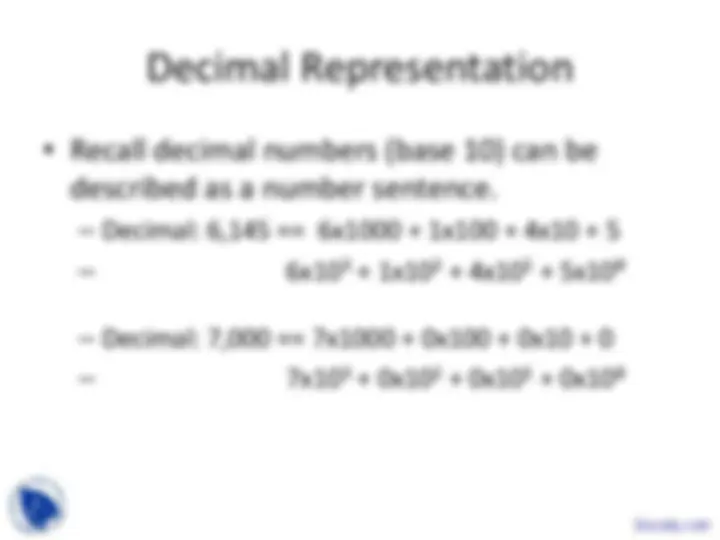
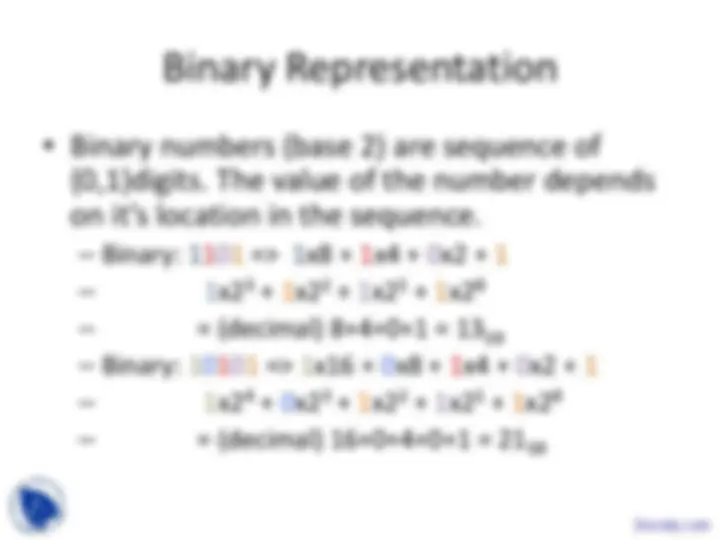
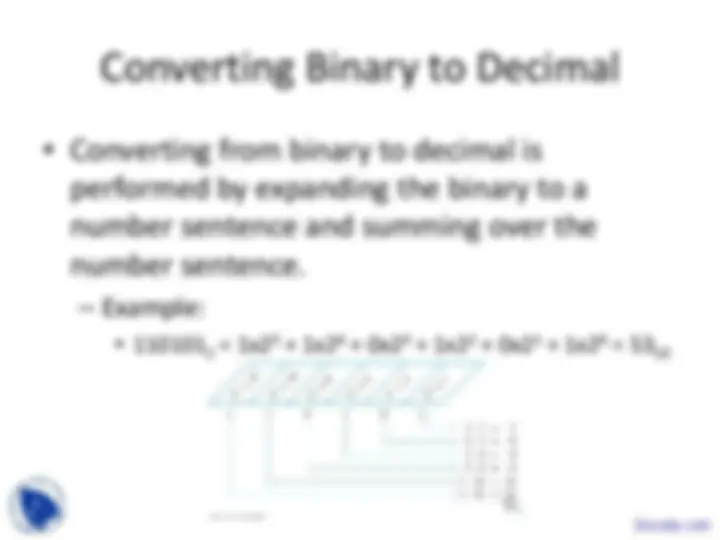
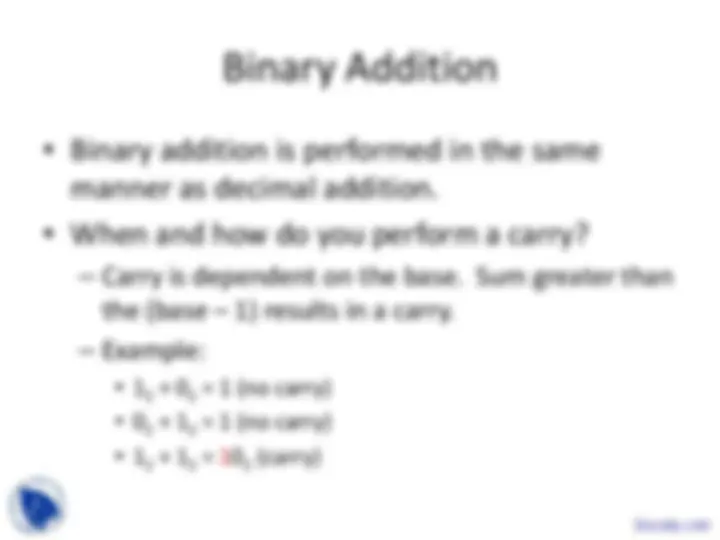
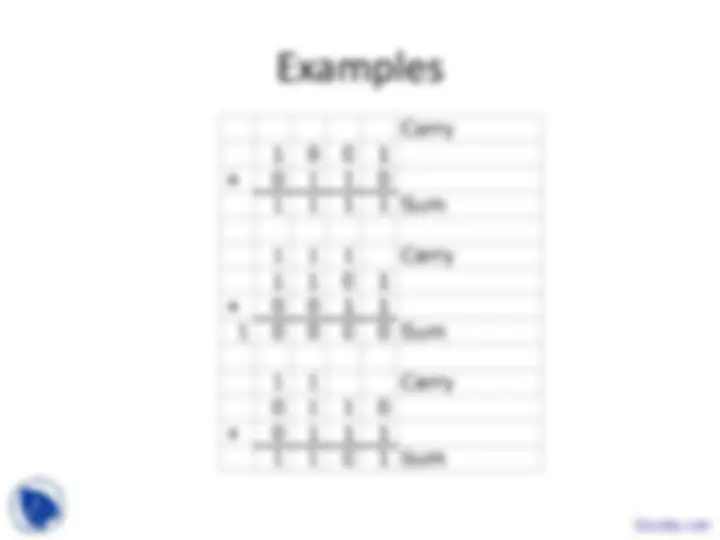
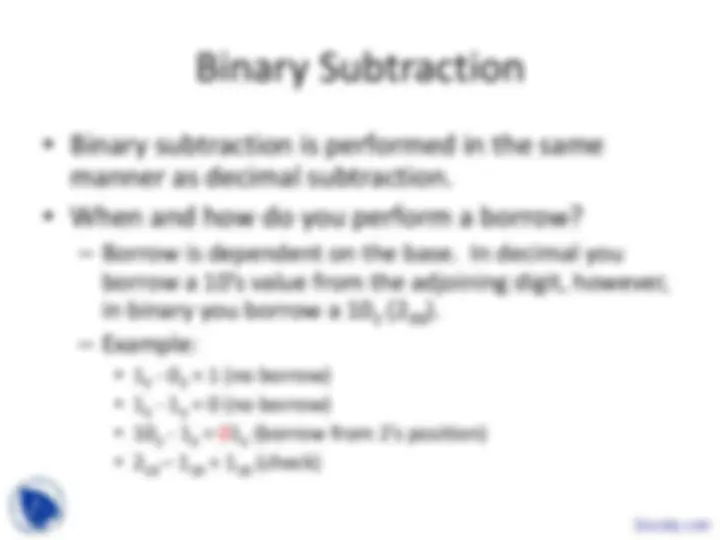
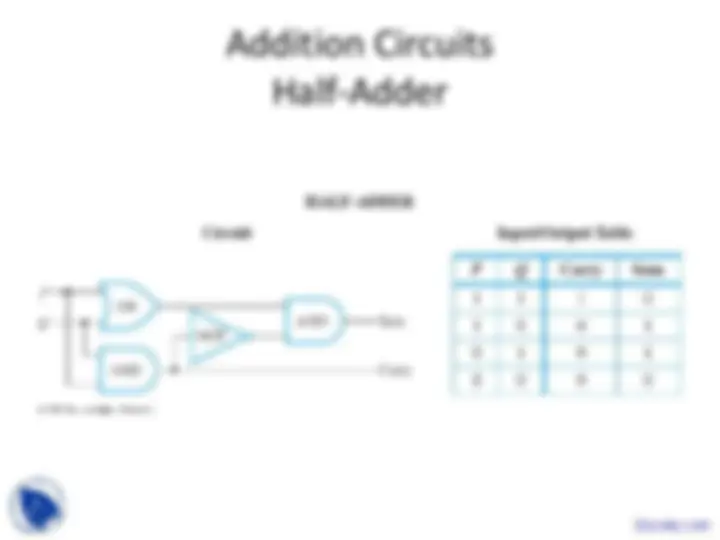
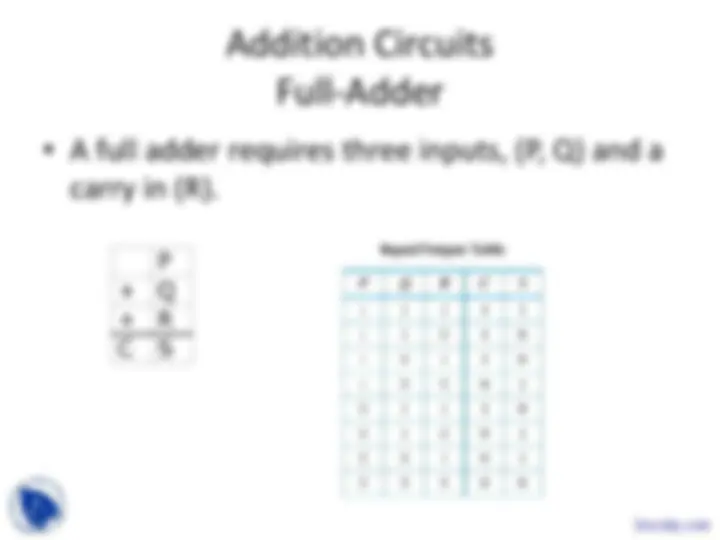
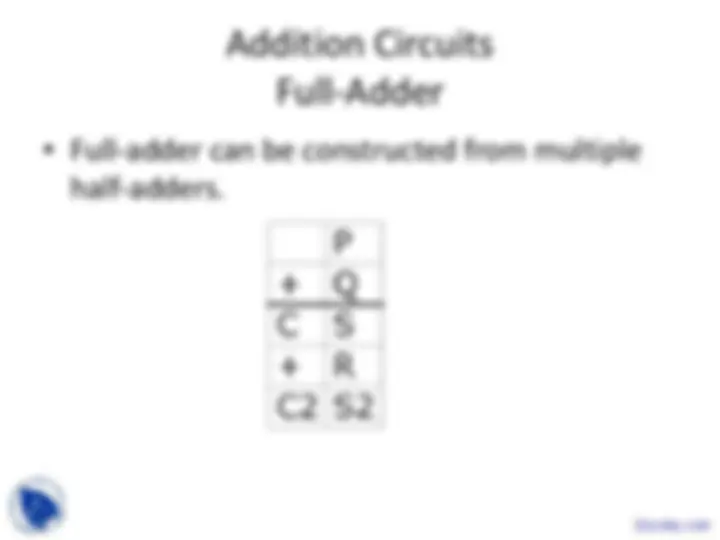
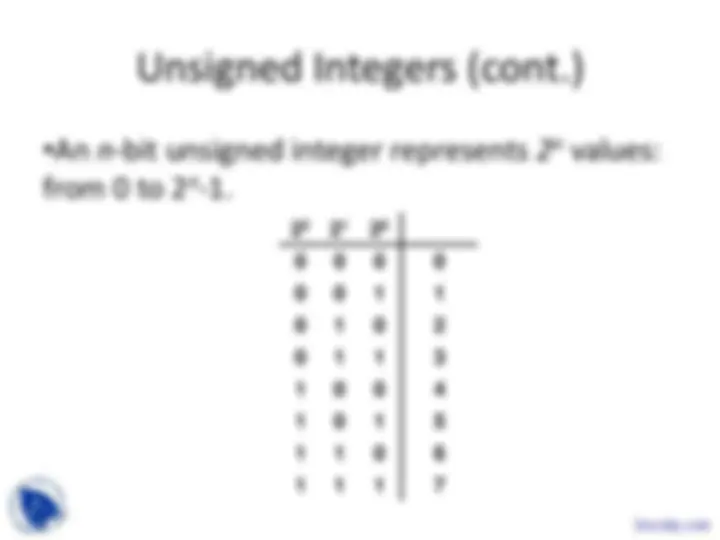
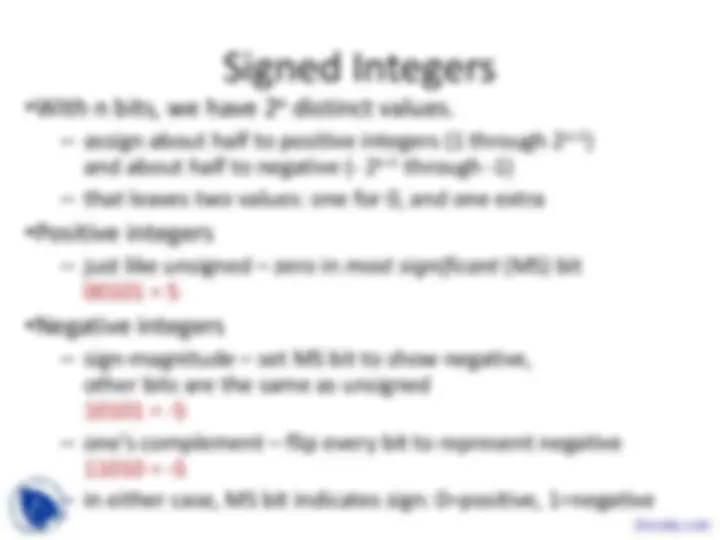
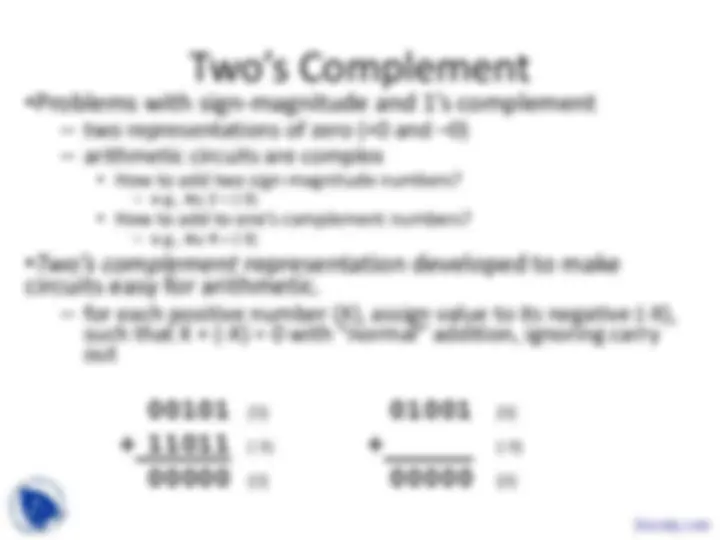
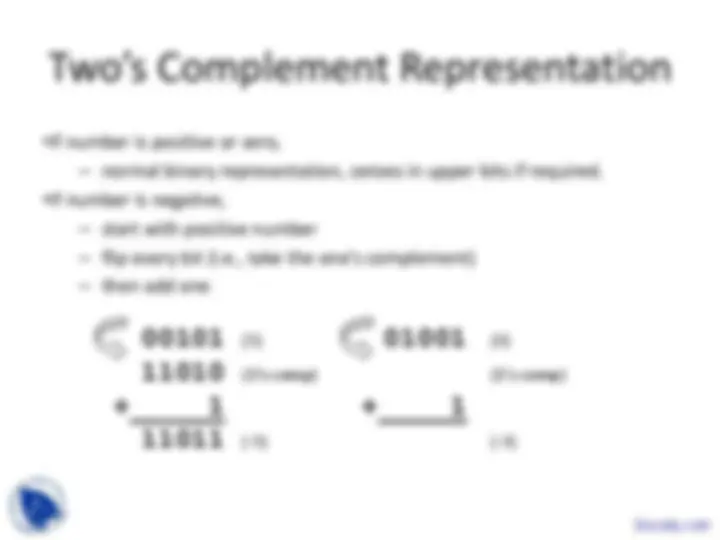
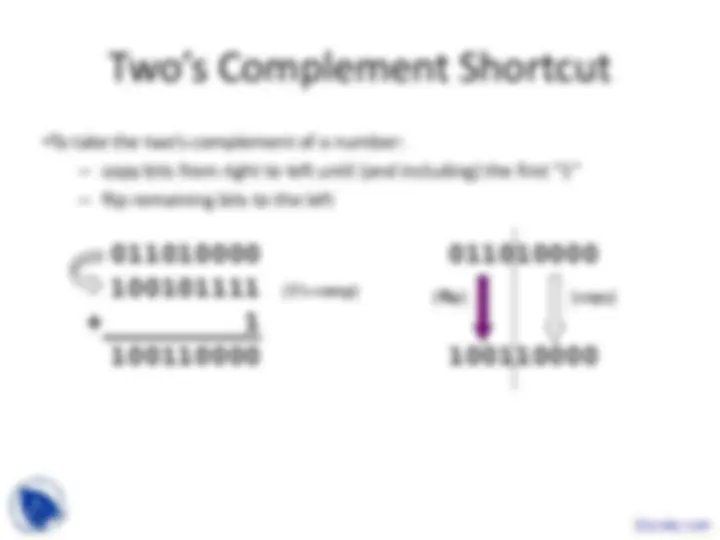
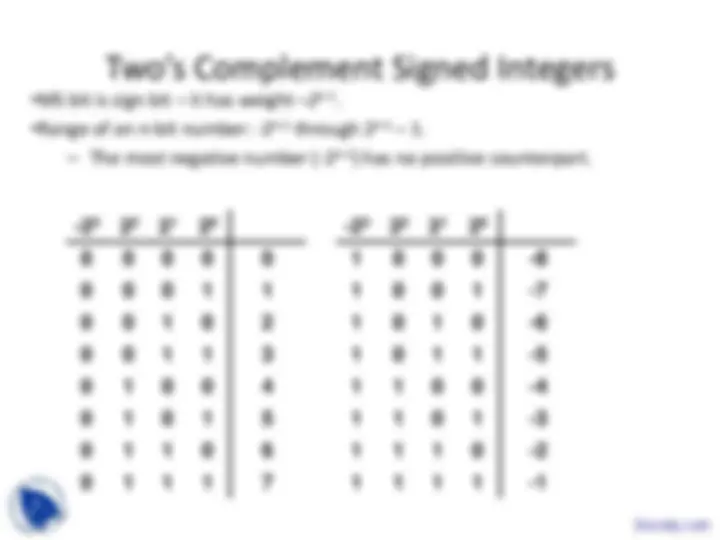
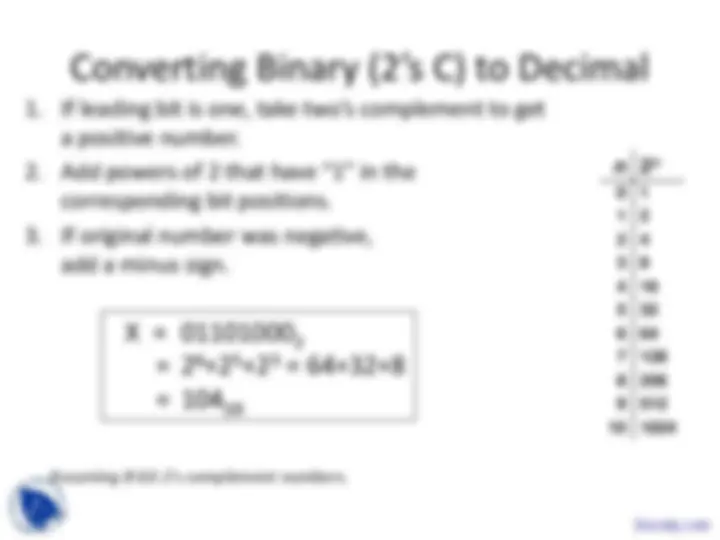
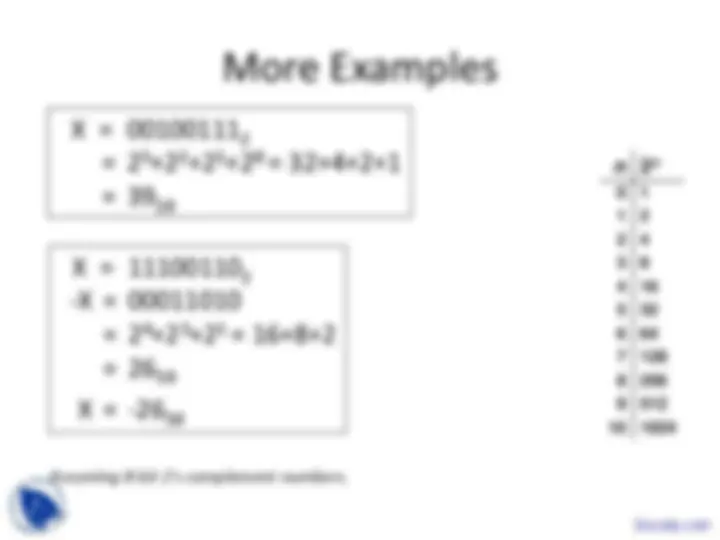
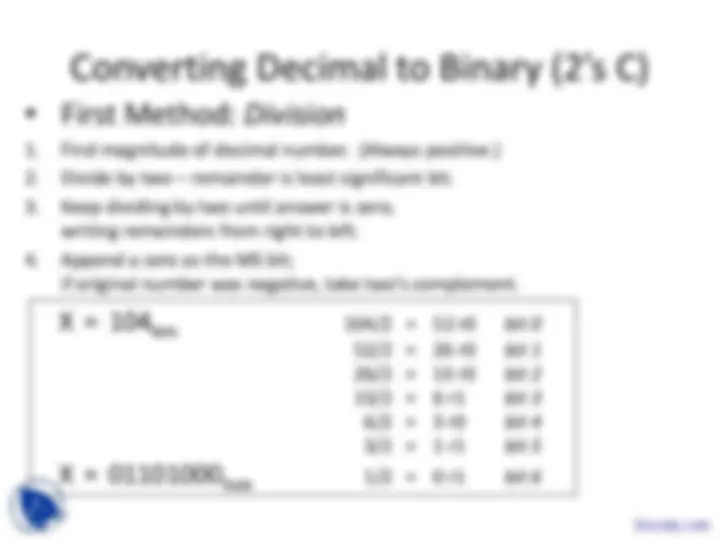


Study with the several resources on Docsity

Earn points by helping other students or get them with a premium plan


Prepare for your exams
Study with the several resources on Docsity

Earn points to download
Earn points by helping other students or get them with a premium plan
Community
Ask the community for help and clear up your study doubts
Discover the best universities in your country according to Docsity users
Free resources
Download our free guides on studying techniques, anxiety management strategies, and thesis advice from Docsity tutors
During the study of discrete mathematics, I found this course very informative and applicable.The main points in these lecture slides are:Number Systems, Logic of Compound Statements, Circuits for Addition, Karnaugh Maps, Decimal Representation, Number Sentence, Binary Representation, Converting Binary to Decimal, Binary Addition, Binary Subtraction
Typology: Slides
1 / 26

This page cannot be seen from the preview
Don't miss anything!



















The Logic of Compound Statements
Number Systems and Circuits for Addition Karnaugh Maps
2-
329 102 101 100
22 21 20 3x100 + 2x10 + 9x1 = 329 1x4 + 0x2 + 1x1 = 5
most significant least significant
2-
2-